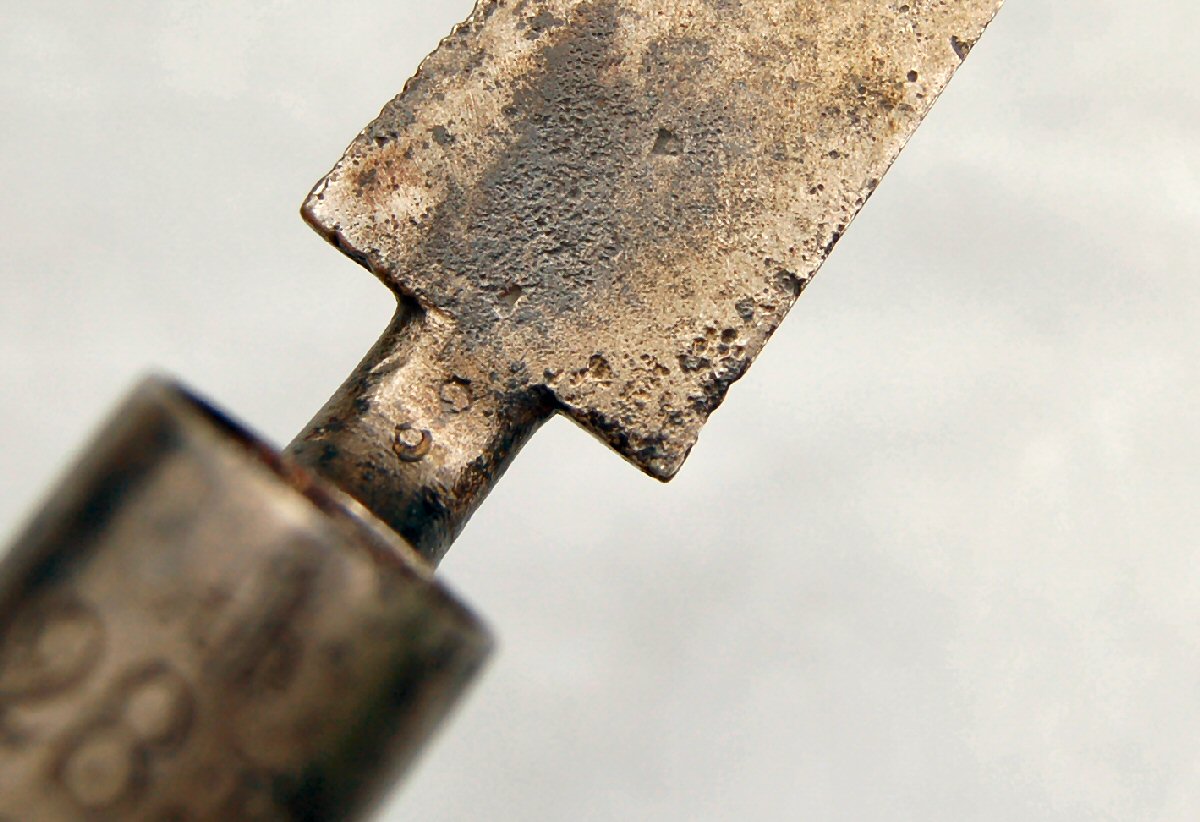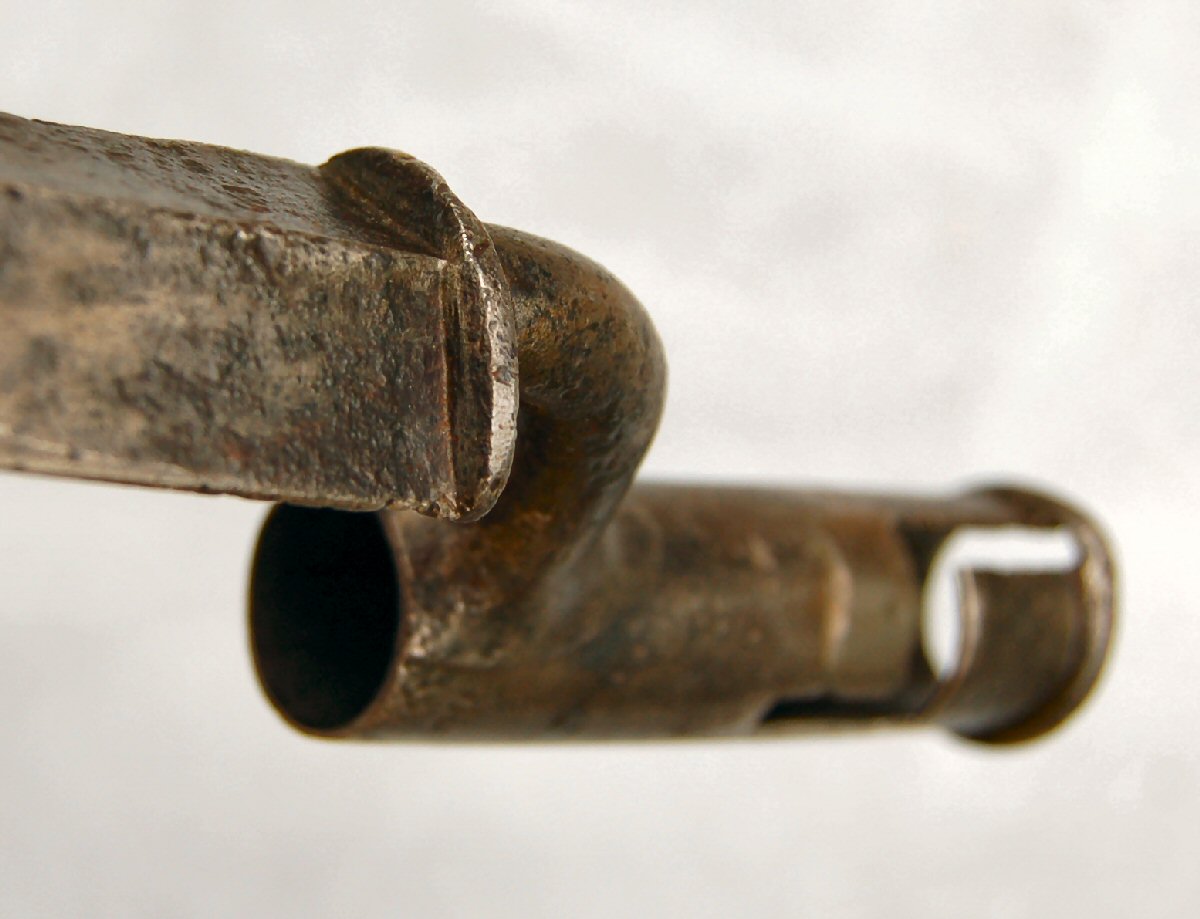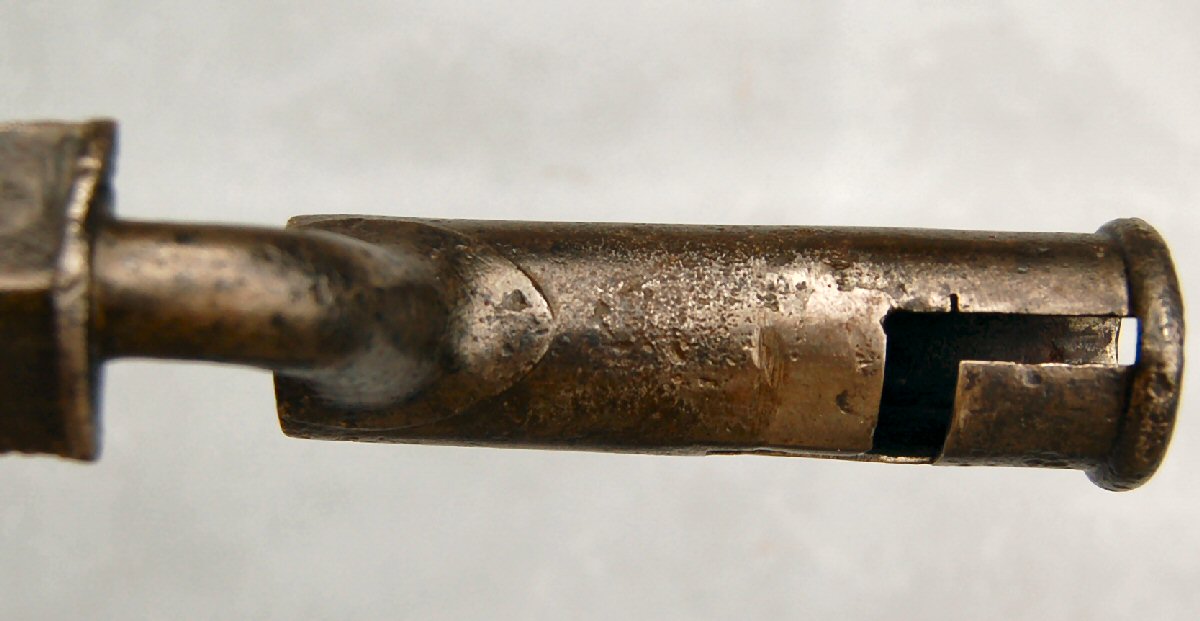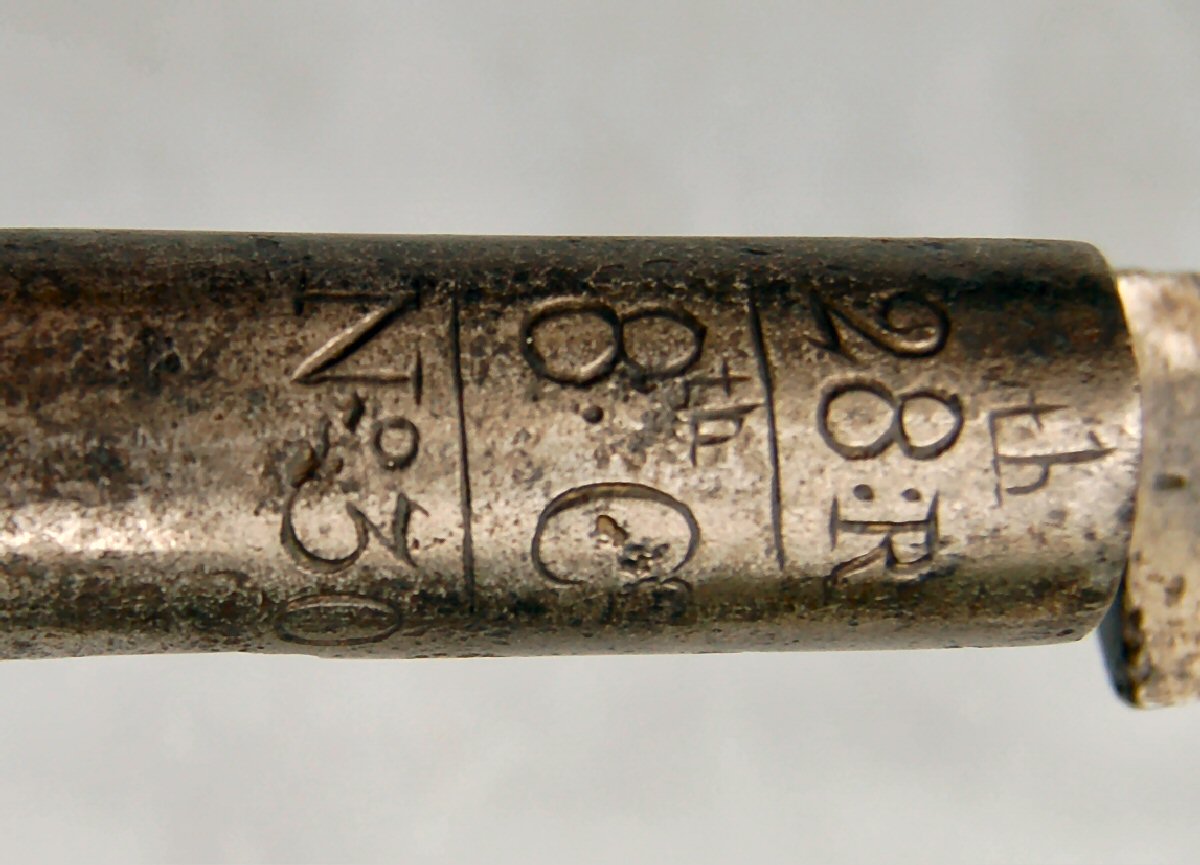In 1758 North America the siege of Louisbourg began. With its four kilometers of walls and more than 100 cannons, the mighty fortress of Louisbourg guarded the entrance to the St. Lawrence River. It was an imposing obstacle to any British force hoping to wrest control of Quebec from France in the Seven Years’ War. In the spring of 1758, General Jeffery Amherst marshaled an impressive force and sailed up the coast to capture Louisbourg. On the morning of June 8, troops under one of his subordinates, James Wolfe, found a sheltered cove and secured a route ashore. It would take a month and a half and a daring expedition to destroy the French ships protecting the harbour to take the stronghold. But once it fell, the way was clear for a decisive invasion that ended French rule in North America the following year and altered the course of Canada’s history.
The socket bayonet in these images is a Brown Bess of 1740s vintage, with a broad face blade, pronounced guard, and distinctive “shield” decoration where the elbow attaches to the socket.




The socket is deeply engraved with the regimental designation (28th R), company (8th.Co) and weapon number (No.30).

During Seven Year War (1757 - 1762) the 28th Regiment of Foot set sail from Ireland for Canada to join a force under General Amherst before Louisbourg in Nova Scotia. Six weeks of hard siege work took its toll, and by the time it fell bad weather had set in and the army had to spend the winter there.
The following year General Wolfe took command and the British forces and sailed up the St Lawrence River, landing beneath the Heights of Abraham at Quebec citadel under cover of darkness. The British force, with the 28th in front, began a precipitous climb up a steep track whilst it was still dark. At daybreak they were in position on a plain to the west of the city.
Although caught by surprise the French commander prepared to give battle and advanced with supporting artillery fire. The British line with the 28th at it's centre held firm until the French were within 35 paces when it opened fire with withering volleys.
Under the hail of shot the French wavered and began to run pursued by the jubilant British with fixed bayonets. After five more days of siege the city surrendered. Both the British General Wolfe and French General Montcalm died of wounds received during the battle.
A more detailed account of the Battle of Quebec lie here - http://www.britishbattles.com/battle-of-quebec.htm/